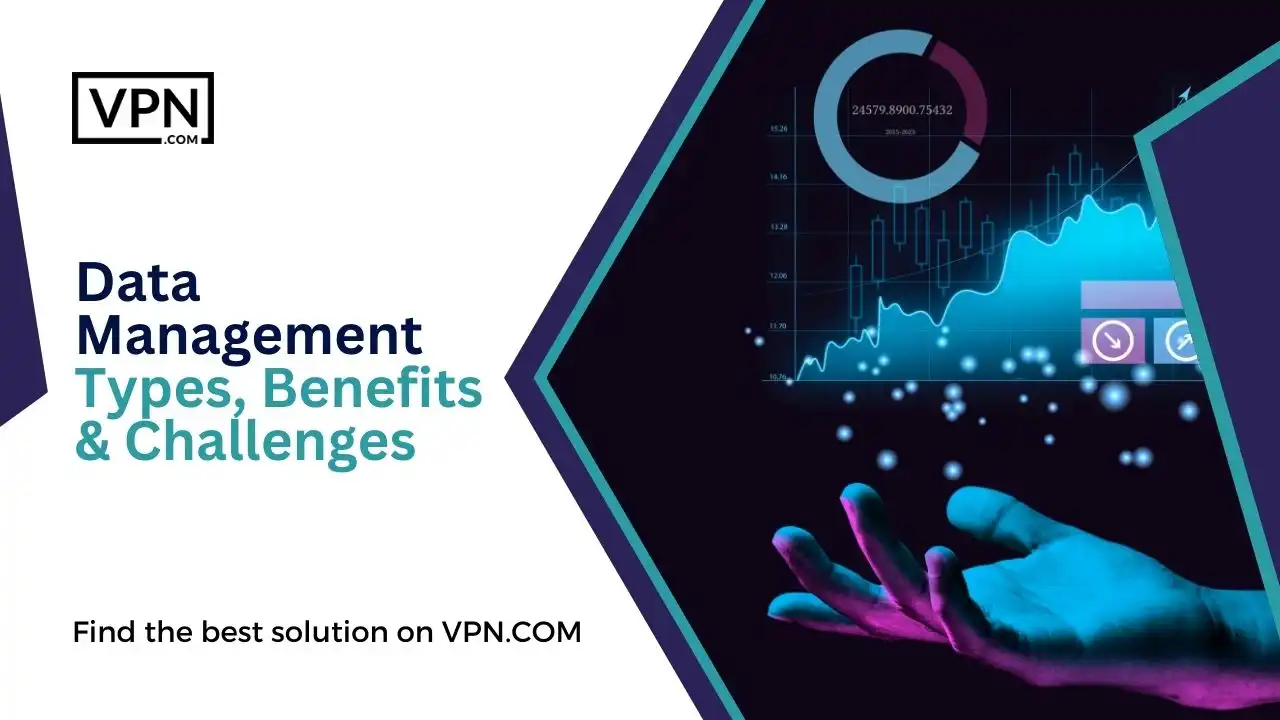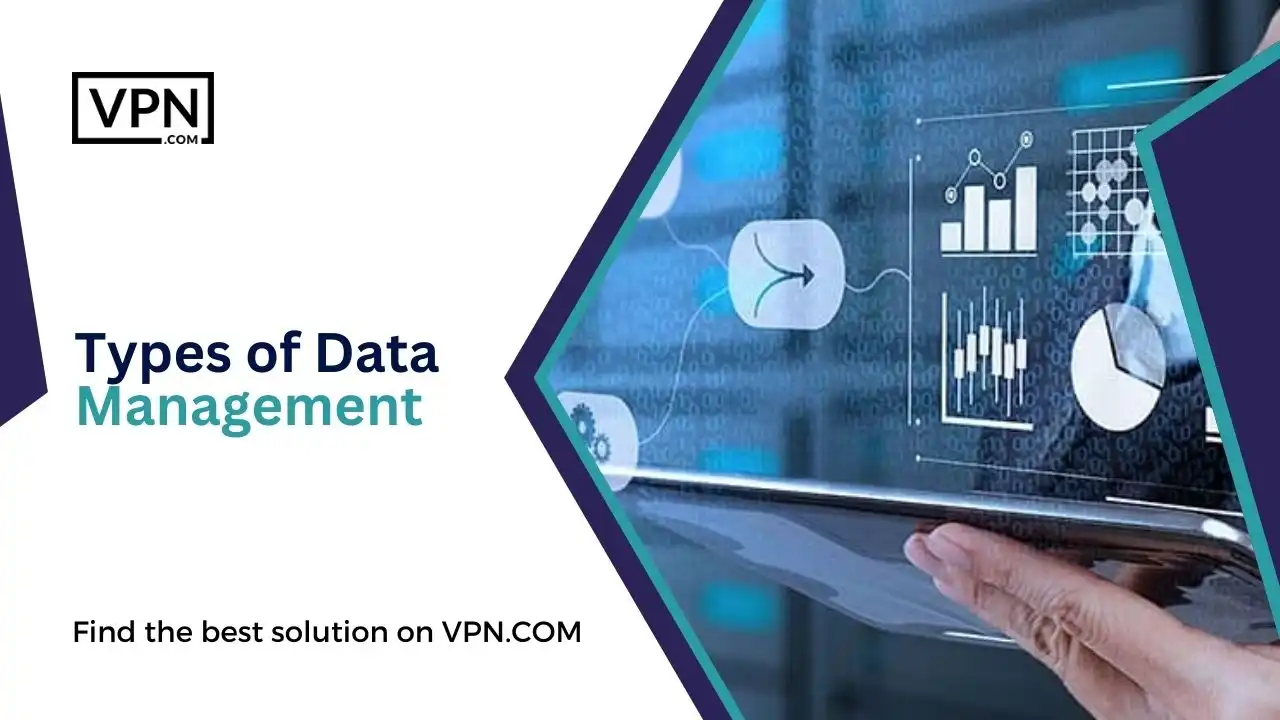Data Management: Types, Benefits & Challenges

As the name shows, data management is all about organizing data assets. But why is it so important and how does it benefit the enterprises in the long run? Here is the answer. Data management is important for businesses to collect, assemble, guard, and keep data effectively and promote adaptivity. Robust data management is the key to effective data analysis and decision formulation that leads to the value of a business.
Despite that, this impactful process has to face a lot of challenges such as incorporating disjointed data vaults and handling complicated privacy rules. Businesses that handle these data obstacles through control, automation, and inspection can make the most of their data.
The following article will elaborate on different aspects of data management such as types, benefits, best methods, and potential hazards. So, this ultimate guide will provide organizations with practical findings about analyzing the power of data management to get a competitive edge.
As we all know data is the most precious asset in the corporate world, that’s why the significance of effective data management has now increased twofold. But first, let’s see the basics of data management.
What is Data Management?
Data management is the practice of collecting, organizing, protecting, and storing an organization’s data so it can be analyzed to drive business decisions and strategic planning. It involves ingesting data from various sources, processing it, and managing databases and infrastructure to ensure the availability, security, consistency, and accessibility of data assets.
The main goal is to maximize the business value derived from data while minimizing cost and risk. Implementing policies, procedures, metrics, and governance around data usage and lifecycle is a key aspect.
With data emerging as one of the most important corporate assets, proper management of data has become critical for organizations to unlock insights that inform growth, innovation, and competitive advantage.

Our #1 Rated Monitoring Service
- 24x7x365 multi-cloud security
- Security Assessment & Remeditation
- DevSecOps
- Cloud Disaster Recovery
Types of Data Management

There are three main branches – operational data management to handle business workflows, analytical management for deriving insights, and governance to establish policies and standards that enable trust in data. In this section, we are going to discuss these types in detail.
Operational data management
Operational data management focuses on managing the data that supports primary business operations within an organization. This includes the data used in essential business processes such as sales, marketing, finance, supply chain, manufacturing, etc. Some key aspects of operational data management include:
- Collecting, organizing, and consolidating operational data from various business systems into databases and data warehouses to enable reporting and analysis
- Managing databases and data infrastructure that support business operations – administration, performance monitoring, security, backup & recovery.
- Providing timely access and delivery of operational data to business users and applications that need it.
- Establishing data governance frameworks and policies to ensure operational data quality, consistency, accuracy, and security
- Integrating operational data across different systems through ETL processes and data pipelines
The overall goal is to provide reliable and relevant operational data that can support day-to-day business decisions and workflows in an effective and controlled manner. Effective operational data management maximizes the business value derived from data assets while minimizing cost and risk.
Analytical data management
Analytical data management focuses on managing data to enable business insights and decision-making. It is based on accumulating data from various sources, changing it, and making it available for analytics and reporting. The main steps of analytical data management include:
- Collecting and integrating data from operational systems, external sources, etc into data warehouses or lakes
- Managing the infrastructure for storing analytical data such as data warehouses, lakes, and marts
- Cleansing, transforming, and modeling data into formats suitable for analysis
- Making data available to data scientists, analysts, and business users through reporting tools, dashboards, APIs, etc.
- Designing governance practices around security, privacy, data lifecycle, and usage policies
The goal is to handle large data volumes efficiently, ensure the quality/reliability of insights, and enable faster, data-driven decision-making across the organization.
Data governance
Data governance establishes policies, standards, processes, and accountability for managing and using data across an organization. This provides a framework for ensuring data quality. Key aspects of data governance for quality include:
- Defining data quality standards and metrics, assigning data management responsibilities, implementing data monitoring/improvement processes, promoting data literacy, and adopting best practices.
- Robust data governance leads to increased trust and reliability in organizational data assets. It minimizes risks from issues like inaccuracies, inconsistency, unauthorized access, or use cases.
- Measuring and sustaining high data quality involves continuous assessment of dimensions like accuracy, completeness, timeliness, and setting benchmarks. Data governance plays an enabling role here.
- Documentation of data lineage, metadata, purpose, and usage through data governance fosters transparency and accountability toward maintaining quality.
In summary, data governance provides the foundation of standards, accountability, and processes upon which high data quality can be built and kept. It is an essential part of modern data management strategies. Implementing strong governance is key to realizing the reliability and usability benefits of quality data while safeguarding against associated risks.
Benefits of Data Management

Successful data management provides a number of benefits that allow businesses to increase the value of their data assets. From compelling cost optimization to making strategic decisions, effectively controlled and used data unleash definite benefits across all basic operations.
In this section, we will discuss potential advantages such as analytics, reliability, security, and many more that highlight why data management benefits investment. Here are 5 key benefits of effective data management:
- Improved data quality and reliability: Data management provides processes and maintenance strategies to improve precision, constancy, and trust in data assets. This paves the path for more effective decisions in the company.
- Better insights from data analytics: Best data collected from different sources gives a dependable footing for effective analytics. Data management deals with large amounts of data effectively to make implementable conclusions.
- Increased data security and compliance: Data management involves the implementation of strategic steps like encryption and access control while authorities make security policies to protect data. This lowers risks and guarantees consent.
- More efficient business operations: Data management removes repetitions, integrates infrastructure, and manages tasks automatically. This increases workflows and saves your time and costs. Constant access to quality data also increases output.
- Enhanced decision-making capabilities: Inclusive data control guarantees the accessibility of persistent, reliable data. This approach provides data-directed deliberate planning and effective planning, offering a competitive advantage.
To sum up, we can say that completely controlled superior data provides many benefits to enterprises starting from security to innovation.
The research has given strong evidence on how data management techniques help businesses grow to make the most of the value of their data assets. Executing the latest data management practices is important to realize the game-changing capacity of data.
Challenges in Data Management

Data management comes with a host of challenges – from siloed data and integration complexities to rising infrastructure costs and talent shortages. We will explore common pitfalls like security risks, lack of governance, and manual processes that create hurdles in deriving value from data. Understanding these pain points is essential to map solutions.
- Data silos and poor integration: Data trapped in silos across departments leads to inconsistencies, wasted resources, and barriers to insights. Solutions involve improving data sharing through ETL processes, data warehouses, and enterprise-wide data integration platforms.
- Privacy and security risks: Increasing cyber threats and complex regulations around consumer data privacy pose huge risks. Steps like access controls, encryption, and data minimization can help safeguard sensitive information.
- Costs and ROI: The exponential growth of data leads to increased infrastructure and management costs. While difficult to quantify, the business value delivered by high-quality, integrated data offsets these costs long-term.
- Skill shortages: There is a severe shortage of qualified data professionals and a lack of data skills among business users. Investing in training programs and exploring automated solutions like AI/ML can help overcome the talent grind.
- Lack of data strategy/governance: Many organizations lack the frameworks to effectively manage data at scale. Developing a formal data strategy aligned with business goals along with governance programs helps maximize data reliability and usability.
Mastering modern data management requires overcoming these key challenges through a combination of people, processes, and technology. The solutions aim to enhance trust in data, enable self-service access, provide security, and unlock more business value – key tenets of any data management approach.
Best Practices for Data Management

Proper data management establishes the critical frameworks for collecting, organizing, governing, and optimizing data assets. By providing the availability of high-quality, reliable data, it empowers effective analytics and strategic decisions that drive business value. We will explore key data management best practices.
Develop a clear data strategy aligned with business goals
A data strategy provides direction and alignment between data activities and business objectives. It should highlight how data will be used to support goals around efficiency, decision-making, innovation, etc.
Best practices include starting with the overall business strategy, conducting audits of the current data landscape, identifying deficiencies, and defining measurable data goals that help close those gaps. Data strategy is an evolving document requiring regular reviews and updates.
Implement a data governance program
Data governance establishes frameworks for ensuring data quality, security, compliance, and appropriate use. It involves policies, standards, accountability models, and monitoring processes.
Best practices are to develop enterprise-wide programs with cross-functional teams, embed practices in daily workflows, check metrics like policy adoption, provide extensive training, and ensure flexibility to support emerging data needs.
Provide ongoing user training
Continuous training across all roles ensures employee awareness of data policies and procedures. It should be tailored based on data access levels and cover topics like data security, privacy, quality standards, and data literacy. Delivering training through multiple mediums makes adoption easier. Assessing training effectiveness through surveys and audits is equally crucial.
Automate manual processes where possible
Automating manual tasks enhances data processing, reduces human errors, and improves productivity. Processes like data integration between systems, data validation, metadata capture, and disaster recovery can leverage the automation capabilities of modern data management platforms. This enables focusing efforts on high-value analytical tasks.
Monitor data quality metrics
Continuous monitoring of metrics enables early detection of data quality issues. Dimensions to track include accuracy, completeness, consistency, and timeliness. Leveraging data quality tools provides visibility through dashboards. Benchmarking against goals identifies gaps to improve. This supports the reliability of data for business needs.

Our #1 Rated Monitoring Service
- 24x7x365 multi-cloud security
- Security Assessment & Remeditation
- DevSecOps
- Cloud Disaster Recovery
Conclusion
As data is growing at a steady pace to become one of the most valuable assets for businesses, comprehensive data management is important for companies to utilize the power of data. Effective techniques help in attaining maximum value from data while tackling traps around costs, security, and more.
There are three main types of data management; operational, analytical, and governance. When technically combined, these three types provide multiple benefits that give rise to enhanced data reliability, deeper analysis, improved decision-making, and greater efficiency. However, data management comes with a lot of challenges that need to be resolved through governance structures, safety controls, automation, inspection, and training.
Implementing best practices for making powerful data techniques that match the business goals, executing powerful data control, paying heed to security, and giving continuous user education can assist companies in taking advantage of the power of their data assets. With data rising as the key driving competitive edge, no business can neglect to overlook the significance of comprehensive, business-level data management. The time for action is now.




